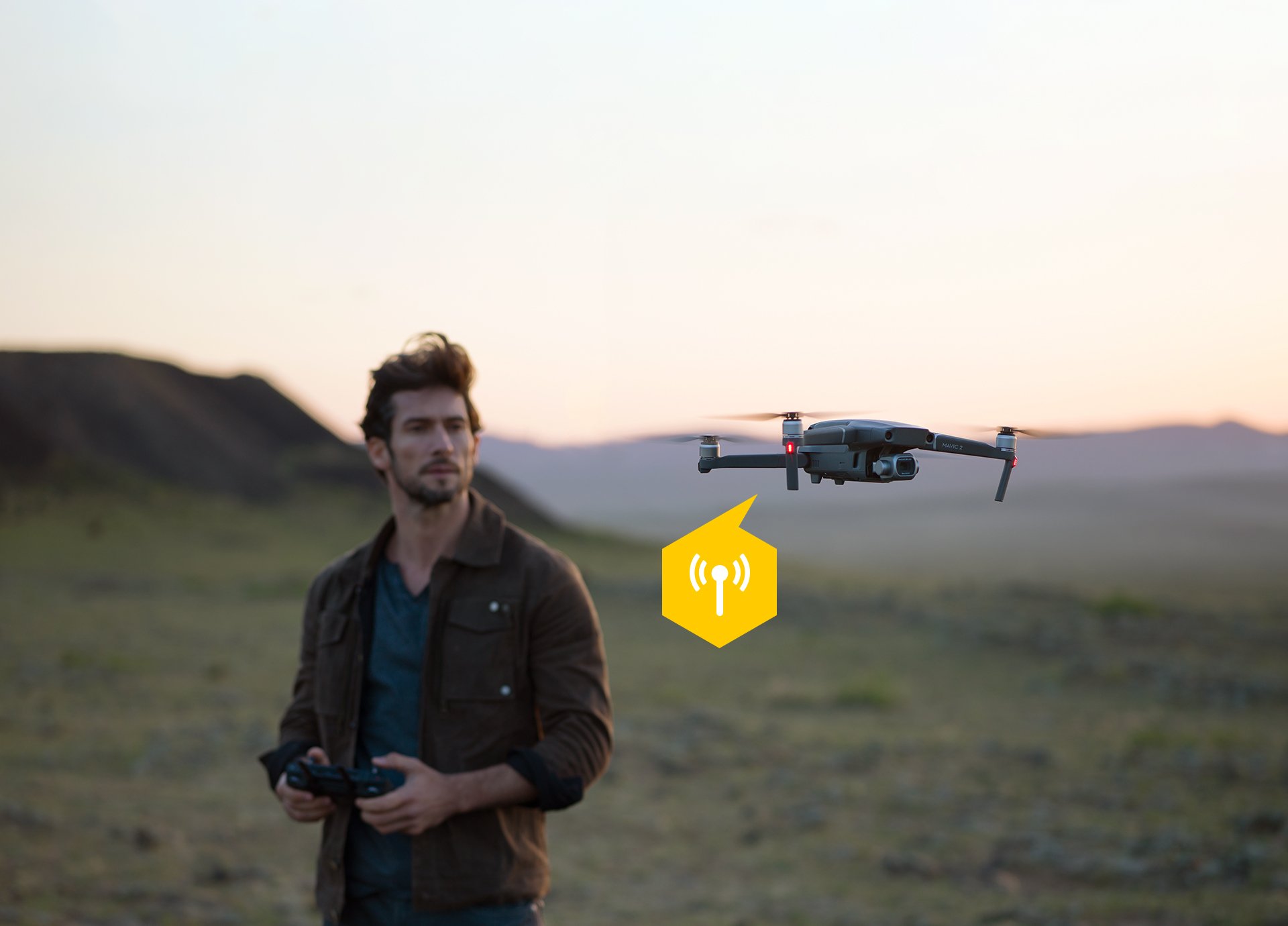It’s like on the this clip at about 2:35 where the guy comes out out and calls about drone flying at his location. There is no internet and he has to call a USS.
You are using an out of date browser. It may not display this or other websites correctly.
You should upgrade or use an alternative browser.
You should upgrade or use an alternative browser.
FAA Remote I.D.
- Thread starter dronesky
- Start date
I agree, this is something that has many thinking they need both on the standard RID. I believe internet is more for joe public first then FAA. Broadcast will be mainly FAA. Either or.
The USS system is intended to provide data to organizations and users not within range of the direct broadcast.
It’s like on the this clip at about 2:35 where the guy comes out out and calls about drone flying at his location. There is no internet and he has to call a USS.
He's not calling a USS - he's calling the facility manager who looks up the flight on a network RID website.
- Joined
- Mar 26, 2018
- Messages
- 312
- Reaction score
- 176
- Age
- 54
Self Broadcast also meets the requirements.
How does self broadcast work?
I think I found it.
9. Message Transmission
The FAA is proposing in § 89.310(i)(1) that standard remote identification UAS be capable of transmitting the message elements in proposed § 89.305 through an internet connection to a Remote ID USS. Additionally, the FAA is proposing in § 89.310(i)(2) to require that standard remote identification UAS be capable of broadcasting the message elements in proposed § 89.305 using a non-proprietary broadcast specification and radio frequency spectrum in accordance with 47 CFR part 15 that is compatible with personal wireless devices. The FAA envisions that remote identification broadcast equipment would broadcast using spectrum similar to that used by Wi-Fi and Bluetooth devices. The FAA is not, however, proposing a specific frequency band. Rather, the FAA envisions industry stakeholders would identify the appropriate spectrum to use for this capability and would propose solutions through the means of compliance acceptance process. This requirement would ensure that the public has the capability, using existing commonly available and 47 CFR part 15 compliant devices, such as cellular phones, smart devices, tablet computers, or laptop computers, to receive these broadcast messages.
It's nice to know that DJI is NOT in favor of the USS element of the proposal. The live broadcast is sufficient IMO.
According to this statement by DJI, the FAA is going far beyond what the ARC members suggested with the USS/network element.
Quote/
the ARC produced a final report that did not recommend mandatory internet-based services. Rather, the consensus recommendation was for drones flying under existing FAA rules to perform Remote ID via a radio broadcast, with network solutions an optional alternative. The ARC’s many months of work demonstrated how broadcast technologies scored best for inexpensive retrofit, ease of compliance, and performance. Network-based solutions involved the highest costs, burdens, and privacy intrusions.
/Quote

 content.dji.com
content.dji.com
According to this statement by DJI, the FAA is going far beyond what the ARC members suggested with the USS/network element.
Quote/
the ARC produced a final report that did not recommend mandatory internet-based services. Rather, the consensus recommendation was for drones flying under existing FAA rules to perform Remote ID via a radio broadcast, with network solutions an optional alternative. The ARC’s many months of work demonstrated how broadcast technologies scored best for inexpensive retrofit, ease of compliance, and performance. Network-based solutions involved the highest costs, burdens, and privacy intrusions.
/Quote

We Strongly Support Drone Remote ID. But Not Like This.
DJI wants governments to require Remote ID for drones, but the FAA has proposed a complex, expensive, and intrusive system that would make it harder to use drones in America, and that jeopardizes the success of the Remote ID initiative. Instead, we support a simpler, easier, and free version of...
 content.dji.com
content.dji.com
Last edited:
From what what i understand there are only 3 options to comply the first 2 both require internet and the 3rd limits you to 400ft and you must be in a special area. Also you need a subscription? Even if you can do it without internet that will still essentially make older drone's illegal as it would probly be cheaper to buy a new drone with remote id than try to rig it up on a old drone. It would just really stink to not be able to (legal'y) fly drones not equiped with it without being in some special area. If they would do what i am told the uk does and just allow special privaliges to those who use remote id and let the rules for the rest of us stay the same i think i would be happy.After the 60 day comment period and then a review period by the FAA of the MANY comments. Then then can even change their proposal to try and meet the demands of the commenters or they can push it through as-is.
Worst case ( push it as is) would be at least 6 months before it became law and even then it would be roughly 36 month implementation time.
In terms of “always flying with internet access” that’s but one of the options. Having an aircraft that can Self Broadcast also meets the requirements.
- Joined
- Jan 25, 2019
- Messages
- 259
- Reaction score
- 145
- Age
- 72
They talked a lot about a fixed flying sites. I view it the other way around. Commercial use of airspace by drones for deliver is going to be very limited in the beginning, be infrequent in some areas and never happen in others. Why should these rules apply to 99% of the airspace from the surface to 400' when a large portion of that airspace won't be needed for commercial purpose? The rules regarding remote ID should be applied as needed. Why restrict flight in areas where little if anything other than recreational flying takes place?
- Joined
- Jun 11, 2017
- Messages
- 13
- Reaction score
- 5
- Age
- 48
heads up I just got a copy of ansi cta2063 standard for serial numbers mandated to be used with remote id. a compliant serial number is 4 character alphanumeric code for manufacturer then followed by length code that is a signal alpha character corresponds to number of characters in the serial number in the physical serial number range is from a to t then comes the serial number from the manufacture of the uas. here the fun part serial number for the aircraft we have now can not be updated to the new serial numbers those are for new aircraft only.
Good posts regarding this new proposed regulation. I especially liked SkyMonkey’s post above - very informative.
As a commercial operator, although I don’t really want to, I’m not opposed to having a beacon which will broadcast my location to the FAA, I understand their point.
However, I am opposed to allowing the public (which includes my competition) open access to my operations. Also, in the areas I survey, I have limited to sometimes no cell data service (just because cell service is available doesn’t mean data service is). Most of my jobs are for public works projects which, here in California, means I must pay “prevailing wage”. That means few hundreds of dollars per hour for a 2-man crew. I can only imagine getting out to a site, getting set up, then service cuts out. Or as even the FAA’s scenarios admits, my USS provider is down. Now I have to spend precious time finding a new provider, signing up, paying for a month of service, all the while burning valuable field time & daylight. Hundreds of dollars lost that aren’t chargeable to the client. That doesn’t even include the cost of a new drone or the upgrade of my P4 RTK.
I’ll be sure to leave a comment for the FAA.
As a commercial operator, although I don’t really want to, I’m not opposed to having a beacon which will broadcast my location to the FAA, I understand their point.
However, I am opposed to allowing the public (which includes my competition) open access to my operations. Also, in the areas I survey, I have limited to sometimes no cell data service (just because cell service is available doesn’t mean data service is). Most of my jobs are for public works projects which, here in California, means I must pay “prevailing wage”. That means few hundreds of dollars per hour for a 2-man crew. I can only imagine getting out to a site, getting set up, then service cuts out. Or as even the FAA’s scenarios admits, my USS provider is down. Now I have to spend precious time finding a new provider, signing up, paying for a month of service, all the while burning valuable field time & daylight. Hundreds of dollars lost that aren’t chargeable to the client. That doesn’t even include the cost of a new drone or the upgrade of my P4 RTK.
I’ll be sure to leave a comment for the FAA.
Good posts regarding this new proposed regulation. I especially liked SkyMonkey’s post above - very informative.
As a commercial operator, although I don’t really want to, I’m not opposed to having a beacon which will broadcast my location to the FAA, I understand their point.
However, I am opposed to allowing the public (which includes my competition) open access to my operations. Also, in the areas I survey, I have limited to sometimes no cell data service (just because cell service is available doesn’t mean data service is). Most of my jobs are for public works projects which, here in California, means I must pay “prevailing wage”. That means few hundreds of dollars per hour for a 2-man crew. I can only imagine getting out to a site, getting set up, then service cuts out. Or as even the FAA’s scenarios admits, my USS provider is down. Now I have to spend precious time finding a new provider, signing up, paying for a month of service, all the while burning valuable field time & daylight. Hundreds of dollars lost that aren’t chargeable to the client. That doesn’t even include the cost of a new drone or the upgrade of my P4 RTK.
I’ll be sure to leave a comment for the FAA.
That last paragraph doesn't really apply... if you can't connect via internet then you Broadcast Only. Be sure you fully understand all points before making your comments or it may do more harm than good.
You’re mostly correct, but I went through & re-read the NPRM. It says “if an internet connection is available.” Even though internet connection is available, it is too slow for upload or download. Maybe the solution is obvious then? [emoji848]

I routinely drop to 3G on my phone and have a marginal data connection. And some apps won’t work while others will. I need LTE (4G) for all apps to work reliably. So @ARMeyer may have a point. I guess it depends on how the developer codes the test before takeoff. It needs to take such situations into account.You’re mostly correct, but I went through & re-read the NPRM. It says “if an internet connection is available.” Even though internet connection is available, it is too slow for upload or download. Maybe the solution is obvious then? [emoji848]
View attachment 117008
Similar threads
- Replies
- 2
- Views
- 861
- Replies
- 0
- Views
- 1K
- Replies
- 0
- Views
- 640
- Sticky
- Replies
- 12
- Views
- 5K





